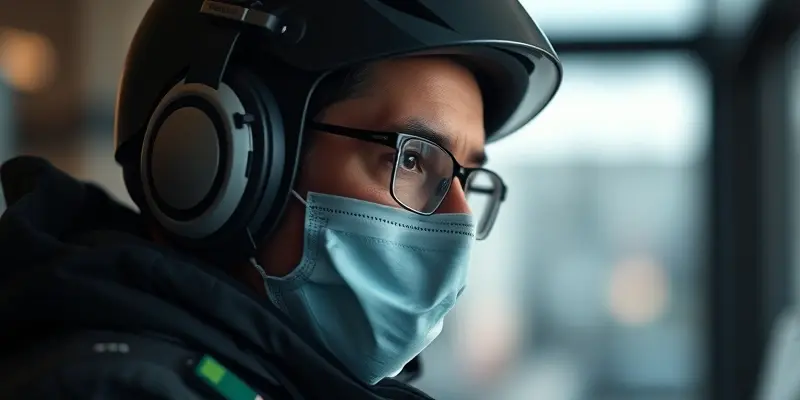The Power of Social Support in Sports Injury Prevention and Recovery
Injuries are an inevitable part of an active lifestyle, whether you’re just starting at the gym or preparing for your next competition. But did you know one of the most powerful tools for staying healthy, healing faster, and getting back on track is social support? As a fitness professional with over a decade of experience, I’ve seen firsthand how crucial a strong support network can be. Let’s dive into why social support matters―and how you can harness it for better fitness outcomes.
What Is Social Support in Sports?
When we talk about social support, we mean the many ways people around you—coaches, teammates, family, trainers, even online peers—help you thrive in your fitness journey. Support comes in different forms:
- Emotional: Encouragement, empathy, being there when times get tough.
- Informational: Guidance, feedback, sharing tips or new research.
- Motivational: Celebrating wins, helping you set and stick to goals.
- Tangible: Offering rides to appointments, helping with daily tasks if you’re injured.
Anyone can be part of your support system: a workout buddy, your physiotherapist, or someone from your gym community.
How Social Support Prevents Injury
Good support does more than just pick you up after an injury—it helps prevent one in the first place. Here’s how:
- Better Techniques through Coaching: Coaches and trainers provide feedback on proper form, warm-ups, and cool-down routines.
- Example: A coach correcting your squat form can keep you from hurting your back.
- Peer Learning: Group classes or teams foster an environment where members share do’s and don’ts, making it easier to spot risky habits early on.
- Accountability and Routine: Knowing someone counts on you helps you stick to safe practices, like stretching or using proper equipment.
Think of your support system like spotters at the gym—they help keep you safe long before something goes wrong.
The Role of Social Support in Recovery
Once injury happens, recovery can feel isolating or overwhelming. This is where social support becomes essential:
- Emotional Support: Friends or teammates who listen and reassure reduce feelings of frustration or loneliness.
- Informational Support: Rehab professionals and knowledgeable peers can simplify complex recovery instructions. This cuts down confusion and stress.
- Motivational Support: Sharing your progress—no matter how small—keeps you focused and hopeful. Research shows that supported athletes adhere to rehab routines significantly better.
- Tangible Support: Getting help with transportation or everyday tasks takes pressure off, so you can focus on healing.
A real-world example? A study found that athletes recovering from knee injuries who had strong support not only healed quicker but also had less anxiety about returning to play. For detailed steps to optimize your healing process, consider following our injury recovery checklist.
Returning to Training: Staying Motivated and Connected
Returning to training isn’t just about physical readiness—it’s a big mental hurdle, too. Social support smooths this transition:
- Goal-Setting with Your Team: Working with coaches and rehab staff to set clear goals provides direction and celebrates progress.
- Peer Groups and Mentors: Talking to others who’ve been through similar injuries helps normalize setbacks and offers practical tips.
- Digital Tools: Many athletes now use apps that send reminders, track milestones, and make it easier to communicate with healthcare teams.
Staying connected with your fitness community keeps your motivation up and ensures you’re not facing challenges alone.
Practical Tips: Building Your Support Network
Whether you’re a beginner or training for a marathon, here’s how you can strengthen your circle:
- Identify Your Supporters: List who helps you—family, friends, coaches, online groups.
- Communicate Openly: Share your recovery plan and needs. Don’t hesitate to ask for specific help.
- Join a Community: Engage in group workouts, club events, or online forums. Shared experiences foster trust and support.
- Leverage Professional Help: Don’t skip on expert guidance—physiotherapists, nutritionists, and trainers are essential allies.
- Be a Supporter Yourself: Offer encouragement and share knowledge—you’ll strengthen your own network in return.
Remember: Building a support network isn’t just for when things go wrong—it’s a key part of staying resilient and growing stronger, together.
Conclusion: Strong Alone, Unstoppable Together
Injury prevention, recovery, and returning to fitness are never solo journeys. The science—and the stories—show that leaning on your support network leads to safer, faster, and more rewarding progress. Whether you’re bouncing back from a setback or aiming for new heights, don’t hesitate to reach out, build connections, and support others in our Gympulse Club family.
Ready to make your support network a superpower? Get involved, ask for guidance, and remember: your strength multiplies when you share it.
For more expert tips or to connect with fellow Gympulse Club members, join our community forums or speak to one of our team professionals. Stay strong, stay supported!

